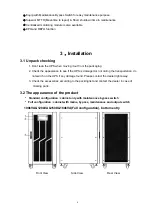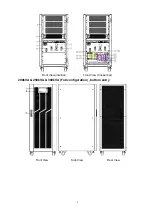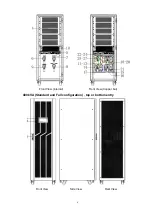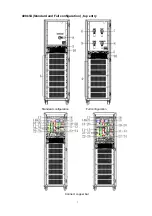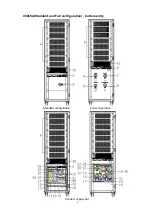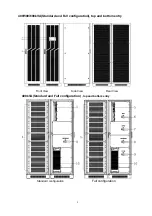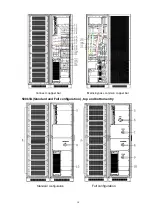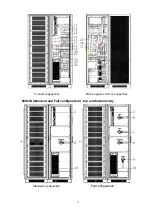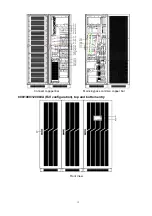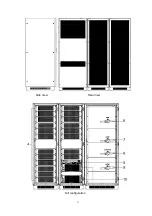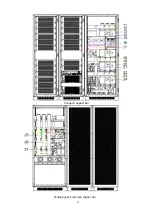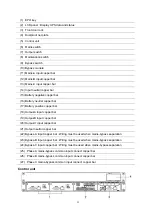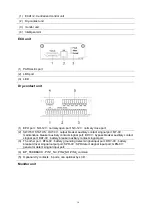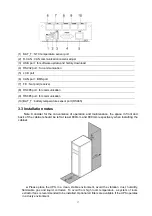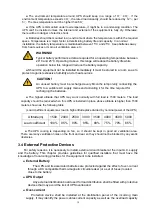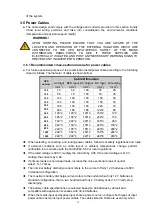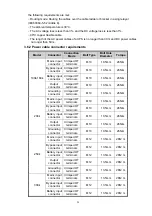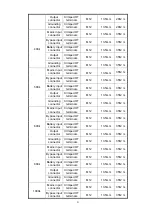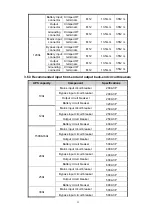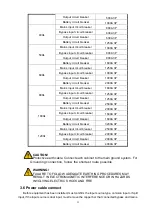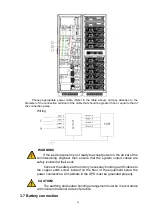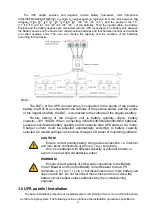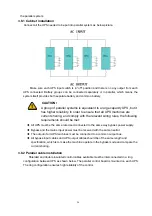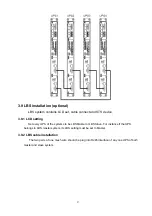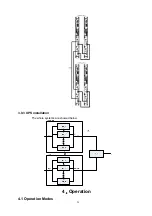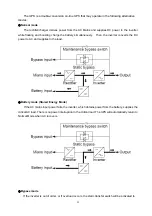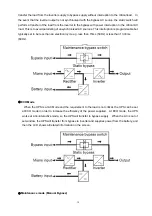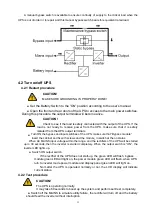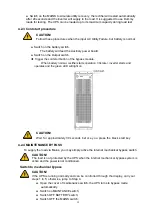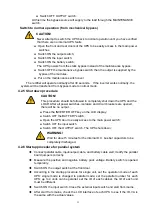
18
◆
The environment temperature around UPS should keep in a range of 0
℃
~
40 . If
℃
the
environment temperature exceeds 40 , the rated load capacity should
℃
be reduced by 12
%
per
5 . The max temperature can't be higher than 50 .
℃
℃
◆
If the UPS is dismantled under low temperature, it might be in a condensing condition. The
UPS can't be installed unless the internal and external of the equipment is fully dry. Otherwise,
there will be in danger of electric shock.
◆
Batteries should be mounted in an environment where the temperature is within the required
specs. Temperature is a major factor in determining battery life and capacity. In a normal
installation, the battery temperature is maintained between 15°C and 25°C. Keep batteries away
from heat sources or main air ventilation area, etc.
WARNING!
Typical battery performance data are quoted for an operating temperature between
20°C and 25°C. Operating it above this range will reduce the battery life while
operation below this range will reduce the battery capacity
.
◆
Should the equipment not be installed immediately it must be stored in a room so as to
protect it against excessive humidity and or heat sources
.
CAUTION!
An unused battery must be recharged every 6months
temporarily connecting the
UPS to a suitable AC supply mains and activating it for the time required for
recharging the batteries.
◆
The highest altitude that UPS may work normally with full load is 1500 meters. The load
capacity should be reduced when this UPS is installed in place whose altitude is higher than 1500
meters, shown as the following table:
(Load coefficient equals max load in high altitude place divided by nominal power of the UPS)
Altitude(m)
1500 2000
2500
3000
3500
4000 4500 5000
Load coefficient
100% 95%
90%
85%
80%
75%
70%
65%
◆
The UPS cooling is depending on fan, so it should be kept in good air ventilation area.
There are many ventilation holes on the front and rear, so they should not be blocked by any exotic
obstacles.
3.4
External Protective Devices
For safety reasons, it is necessary to install, external circuit breaker at the input A.C. supply
and the battery. This chapter provides guidelines for qualified installers that must have the
knowledge of local wiring practices for the equipment to be installed.
◆
External Battery
The UPS and its associated batteries are protected against the effect of over-current
through a DC compatible thermo-magnetic circuit-breaker (or a set of fuses) located
close to the battery.
◆
UPS Output
Any external distribution board used for load distribution shall be fitted with protective
devices that may avoid the risk of UPS overloaded.
◆
Over-current
Protection device shall be installed at the distribution panel of the incoming main
supply. It may identify the power cables current capacity as well as the overload capacity
Summary of Contents for HIP3300E
Page 14: ...13 Side View Rear View Full configuration...
Page 15: ...14 Connect coppper bar Mains bypass common copper bar...
Page 29: ...28 3 9 3 UPS installation The whole systems are showed below 4 Operation 4 1 Operation Modes...
Page 40: ...39...
Page 41: ...40 4 3 3 Alarm View the alarm and history of the UPS and open or close the buzer...
Page 49: ...48...
Page 59: ...58 4 3 5 1 USB Wizard History Output download history and setting record by USB...
Page 60: ...59 4 3 5 1 1 Alarm Log Output 4 3 5 1 2 Setting Log Output...

